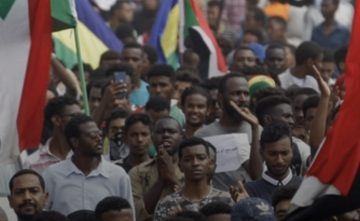Erica Chenoweth in Nature:
 The recent revolutions in Algeria and Sudan remind us that bottom-up movements of people power can create sweeping political transformations. They did this in part by mobilizing huge numbers of active protestors—1 million in Algeria, and around 1 million in Sudan—which constituted impressive numbers in absolute terms. Yet due to coordination problems and the possibility of free riding—where those who stay on the side-lines can benefit from the results of mass mobilization without paying the costs or assuming the risk of participation—few mass movements have been able to mobilize significant proportions of their population. Algeria’s peak event during its “Smile Revolution” reportedly mobilized under 2.5% of the country’s population to effectively topple Bouteflika’s government in March 2019. And Sudan’s ongoing revolution, which reportedly mobilized fewer than 2.5% of Sudan’s national population, has already toppled the 30-year role of Omar al-Bashir and forced the transitional military council into a transitional power-sharing agreement with the opposition.
The recent revolutions in Algeria and Sudan remind us that bottom-up movements of people power can create sweeping political transformations. They did this in part by mobilizing huge numbers of active protestors—1 million in Algeria, and around 1 million in Sudan—which constituted impressive numbers in absolute terms. Yet due to coordination problems and the possibility of free riding—where those who stay on the side-lines can benefit from the results of mass mobilization without paying the costs or assuming the risk of participation—few mass movements have been able to mobilize significant proportions of their population. Algeria’s peak event during its “Smile Revolution” reportedly mobilized under 2.5% of the country’s population to effectively topple Bouteflika’s government in March 2019. And Sudan’s ongoing revolution, which reportedly mobilized fewer than 2.5% of Sudan’s national population, has already toppled the 30-year role of Omar al-Bashir and forced the transitional military council into a transitional power-sharing agreement with the opposition.
How do people power movements succeed while mobilizing modest proportions of the population? And how can dissidents successfully assess their power along the way? In our paper, we begin to answer these questions by turning to a simple metaphor: the physical law of momentum.
More here.
